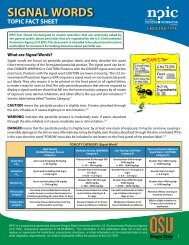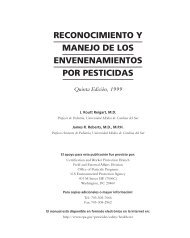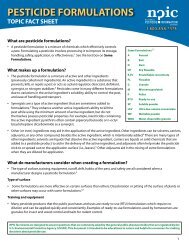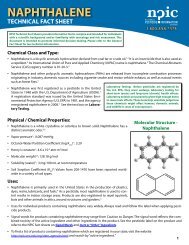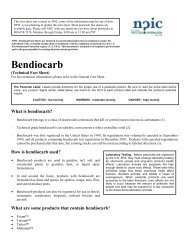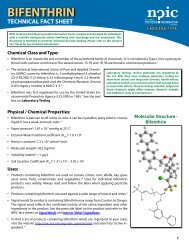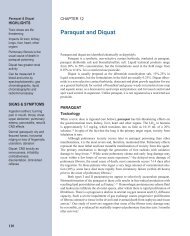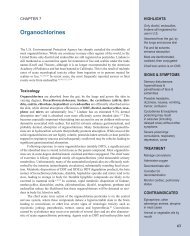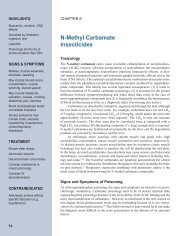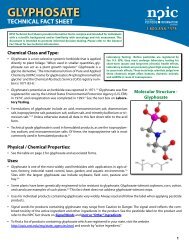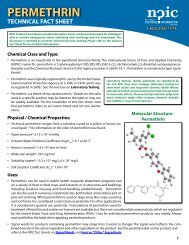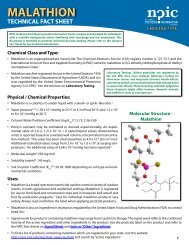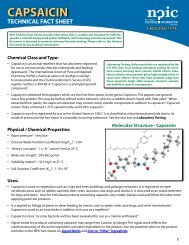dIATomACEouS EARTH - National Pesticide Information Center ...
dIATomACEouS EARTH - National Pesticide Information Center ...
dIATomACEouS EARTH - National Pesticide Information Center ...
Create successful ePaper yourself
Turn your PDF publications into a flip-book with our unique Google optimized e-Paper software.
diatomaceous earth<br />
GENERAL FACT SHEET<br />
Can diatomaceous earth affect birds, fish, or other wildlife<br />
Diatomaceous earth is practically non-toxic to fish and aquatic invertebrates. It is commonly encountered by birds<br />
and other wildlife, and it’s not known to be harmful. However, no toxicity evaluations for wildlife were found. Agencies<br />
have stated that diatomaceous earth is unlikely to affect birds, fish, or other wildlife in a harmful way.<br />
Diatomaceous earth is made of silicon dioxide. When chickens were fed a diet that contained less silicon dioxide than<br />
normal, their bone formation was harmed. This suggests that silicon dioxide plays an important role in bone formation.<br />
Where can I get more information<br />
For more detailed information about diatomaceous earth please visit the list of referenced resources or call the <strong>National</strong><br />
<strong>Pesticide</strong> <strong>Information</strong> <strong>Center</strong>, between 7:30 AM and 3:30 PM Pacific Time (10:30 AM to 6:30 PM Eastern Time),<br />
Monday - Friday, at 1-800-858-7378 or visit us on the web at http://npic.orst.edu. NPIC provides objective, sciencebased<br />
answers to questions about pesticides.<br />
Date Reviewed: January 2013<br />
NPIC is a cooperative agreement between Oregon State University and the U.S. Environmental Protection<br />
Agency (U.S. EPA, cooperative agreement # X8-83458501). The information in this publication does not in<br />
any way replace or supercede the restrictions, precautions, directions, or other information on the pesticide<br />
label or any other regulatory requirements, nor does it necessarily reflect the position of the U.S. EPA.<br />
<strong>National</strong> <strong>Pesticide</strong> <strong>Information</strong> <strong>Center</strong> 1.800.858.7378<br />
4




